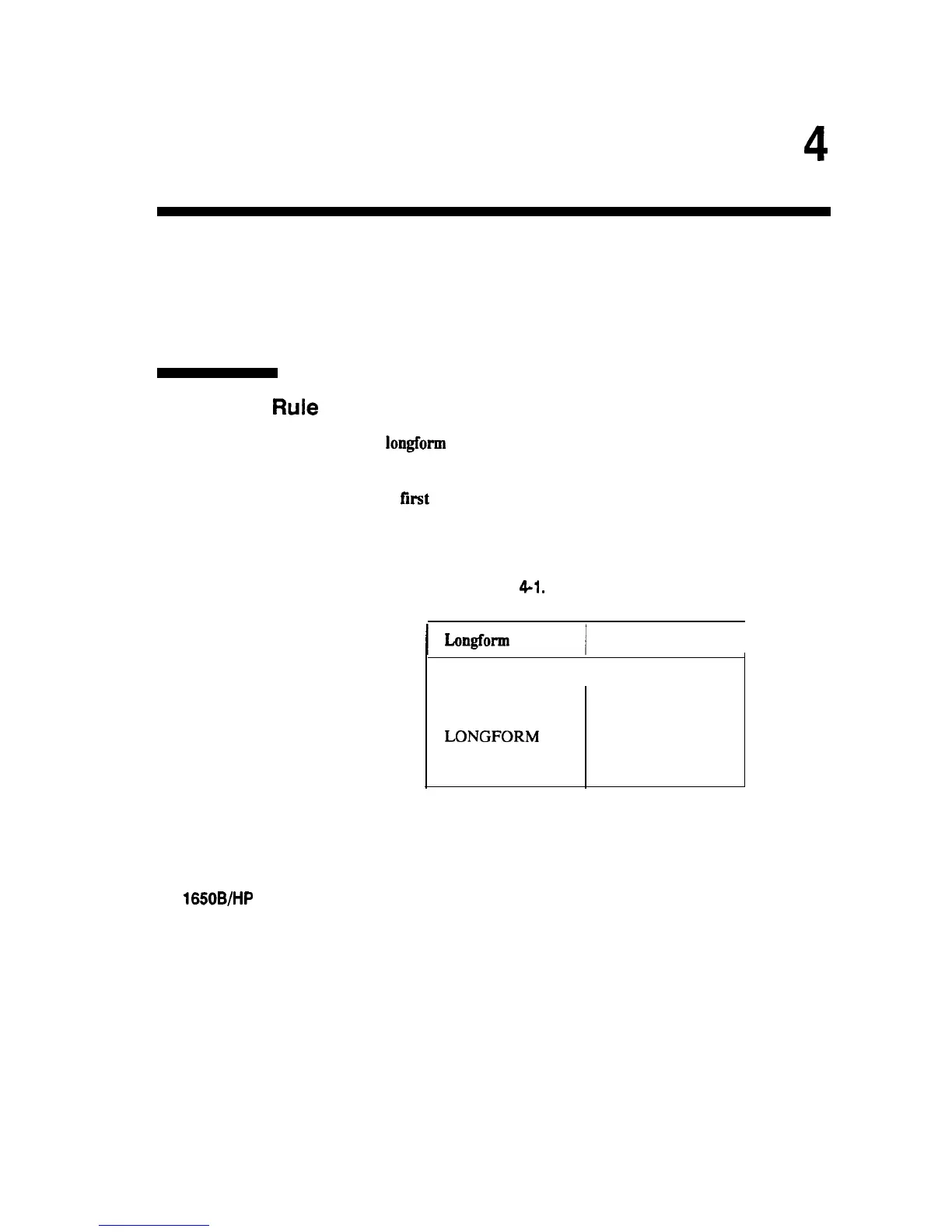Programming and
Documentation Conventions
4
Introduction
This
section covers the programming conventions used in programming
the instrument, as well as the documentations conventions used in this
manual. This chapter also contains a detailed description of the
command tree and command tree traversal.
Truncation
RUk
The truncation rule for the keywords used in headers and parameters is:
If the longform has four or fewer characters, there is no change in the
shortform. Otherwise, the shortform is the first four characters of the
keyword, unless the fourth character is a vowel. If so, the shortform uses
only the first three characters of the keyword.
Some examples of how the truncation rule is applied to various commands
are shown in table 4-l.
Table
4-l.
Keyword Truncation
I
L‘OIlgfOI-IU
Shortform
I
OFF
I
OFF
DATA DATA
START
STAR
LONGFORM
LONG
DELAY
DEL
ACCUMULATE
ACC
HP 1650B/HP 16518
Programming Reference
Programming and Documentation Conventions
4-l

